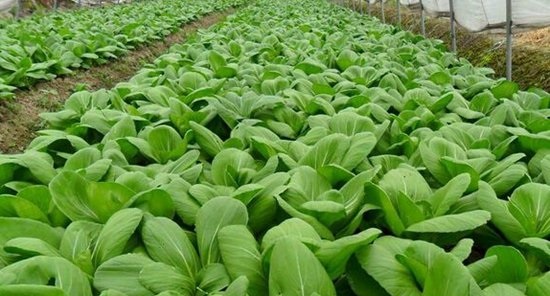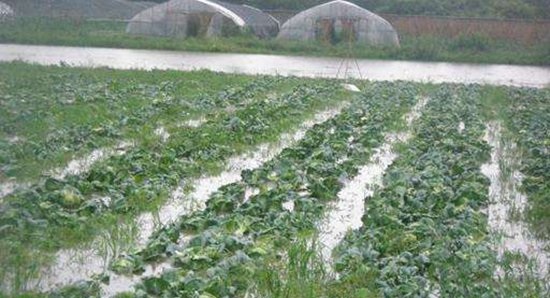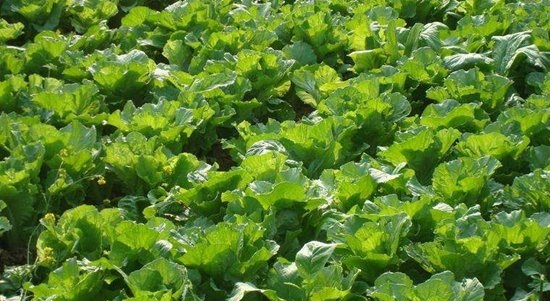Vegetable cultivation: management measures for vegetable cultivation in rainstorm weather
The three major disasters of water, drought and flood have always been the three most serious disasters in the process of vegetable cultivation. Even today, with the rapid development of science and technology, it is still quite destructive. In recent days, heavy rains have occurred throughout the country, causing large-scale waterlogging, and various vegetable planting bases have experienced different levels of disasters, causing serious losses. Then, how should we deal with the rainstorms? How to deal with the management of rainstorm weather vegetable planting is described below. First, grab the drainage and reduce the stain Unblock the three ditches, remove the waterlogging, ensure that the rain is discharged quickly, so that the rain stops the ditch, and there is no water in the ditch. For areas with low ground level and low water level, organize electric pump drainage, speed up drainage and reduce groundwater level. The flooded vegetable fields should eliminate water in the field as soon as possible, vacate the ground, reduce flooding time and reduce the degree of damage. To achieve the "three ditch" ditch and the ditch, the rain stops ditch to protect the vegetable roots healthy growth and reduce waterlogging. Reduce the suffocation of vegetables caused by stagnant water and waterlogging, and prevent vegetables from leaving the park early. Second, grab the management of vegetables in the field Timely rectify the fallen vegetables, reduce the phenomenon of mutual extrusion, and properly cultivate the roots. Spraying foliar fertilizer in time, after the rainstorm, the ability of vegetable roots to absorb water and fertilizer is relatively weak. At this time, foliar fertilizer should be sprayed in time. 0.2% potassium dihydrogen phosphate + 0.5% urea solution can be used to promote vegetables quickly. Rejuvenate. After the rain, the soil is compacted. When the soil is slightly dry, the soil is ploughed in time to improve the soil structure and improve the root activity. When the storm has passed, the artificial spray should be carried out in time to flush the blades. In places where there are wells, it is best to use well water for sprinkler irrigation to wash the soil adhering to the stems and leaves. For the cultivation of vegetables or nursery sheds, it is possible to adopt rain-proof cultivation (that is, directly covering the top film or directly covering the sunshade net or a film plus a net) to reduce the temperature and prevent the rain from scouring or the high temperature exposure after the rain. Third, pest and disease measurement and prevention Agricultural extension departments at all levels should strengthen the prediction of pests and diseases, accurately grasp the development of pests and diseases, increase the comprehensive prevention and control guidance, reduce pests and diseases, and reduce economic losses. After the rainstorm, the field temperature is high, the humidity is high, the plant resistance is weak, and it is easy to cause pests and diseases. It should be sprayed with protection and prevention in time. The agent can be used with carbendazim + enemy killing or chlorothalonil + kung fu and other broad-spectrum pollution-free types, and pay attention to Safety interval. The main pests and diseases are: root rot, blight, downy mildew, blight, anthracnose, powdery mildew, whitefly, bean curd, diamondback moth, Spodoptera litura, etc. The main control measures are: timely clearing drainage, Unblock the "three ditch" in order to reduce the humidity in the field; timely remove the diseased plants (such as root rot, blight, diseased plants, etc.) and bring them to the field for deep burial. Pesticide control after rain and sunny weather: root rot and blight can be treated with methyl thiophanate 700 times liquid root irrigation; for downy mildew, disease can be treated with frosty mildew 800 times liquid or kelu 500 times liquid spray For anthracnose and powdery mildew, use oxadiazole 1500 times solution or thiophanate-methyl 700 times solution or ether oxystrobin 1500 times solution for spraying; 4% Aventidine mites or biphenyl can be used for B. tabaci Spraying 2000 times of chrysanthemum or 1000-1500 times of matrine; spraying 1500 times of polymyxin or worms for moth pests such as Bean, Plutella xylostella, Spodoptera exigua, Spodoptera litura 1500 times liquid or 1% methyl salt 2500 times liquid spray control. Fourth, timely replanting and replanting For some fields with dead seedlings and lack of seedlings, farmers should be actively guided to replant and replant fast-growing vegetables. At the same time, we must take measures to avoid rain, and organize seedlings for autumn-sown vegetables such as cabbage, cauliflower, pepper, tomato, eggplant, hazelnut, cucumber, small pumpkin, lettuce, and celery. For the vacated ground, it is necessary to rush to broadcast fast-growing vegetables: Chinese cabbage No. 5, Chinese cabbage, summer cabbage, lettuce, oil wheat, Guangdong cabbage, leaf potato tips, bamboo leaf vegetables, leeks, celery, edamame, green beans , kidney beans, radishes, parsley, spinach, etc. Fifth, pay attention to prevent secondary disasters The steep terrain of the mountain high road should pay attention to the hazards of mudslides and landslides, and take certain defensive measures to prevent secondary disasters. For facilities with large rainfall and long immersion time, the sheds should be repaired in time to prevent the greenhouse from collapsing. In order to restore vegetable production and reduce economic losses, it is very important to manage the management of vegetable cultivation. In the above, Hui Nong Network Xiaobian introduced the management measures for the cultivation of vegetables in rainstorm weather, hoping to help everyone! Electronics Industrial Nitrile Gloves Electronics Industrial Nitrile Gloves,Pure Nitrile Exam Gloves,Waterproof Gloves For Work,Astm D6978 Examination Gloves Puyang Linshi Medical Supplies Co., Ltd. , https://www.linshimedical.com

